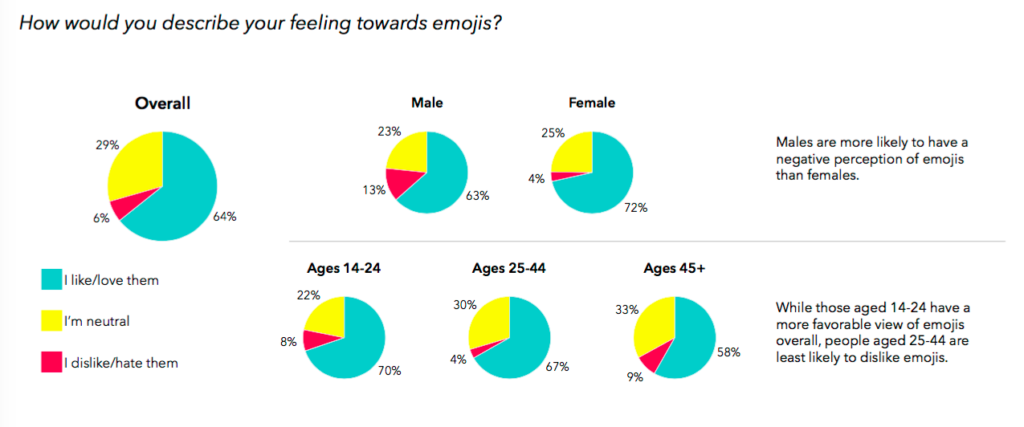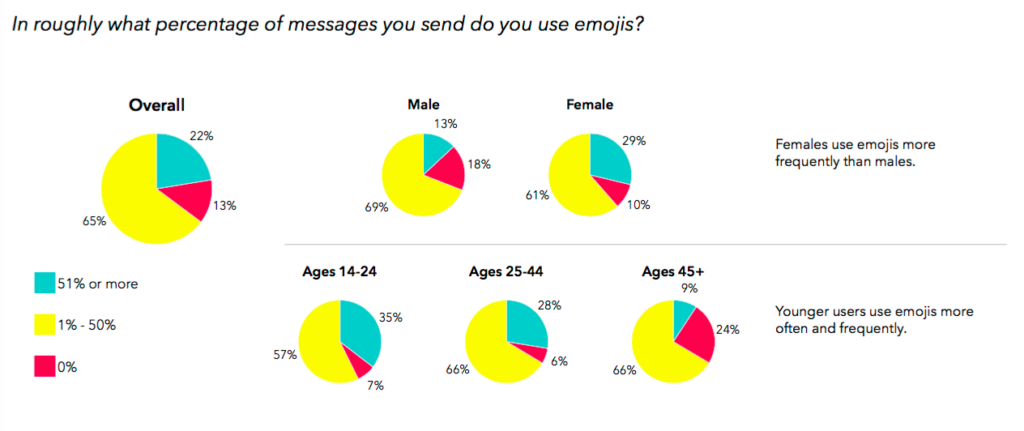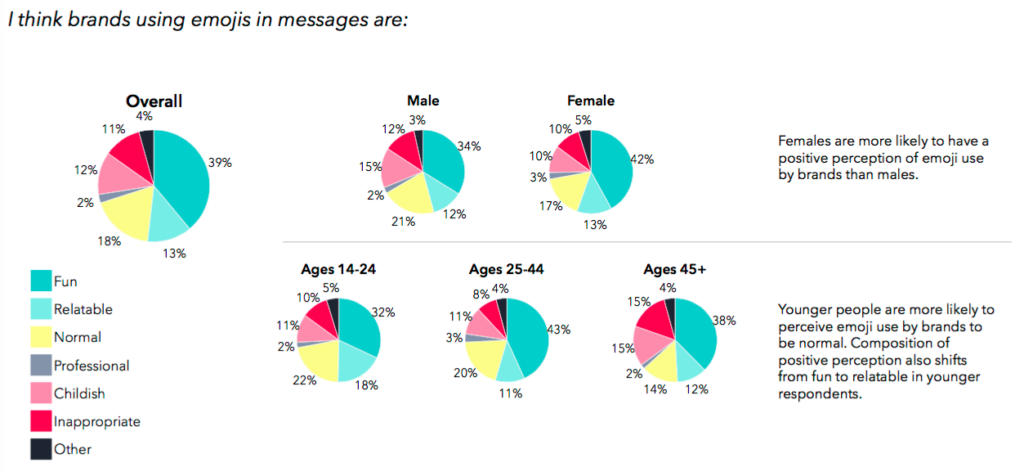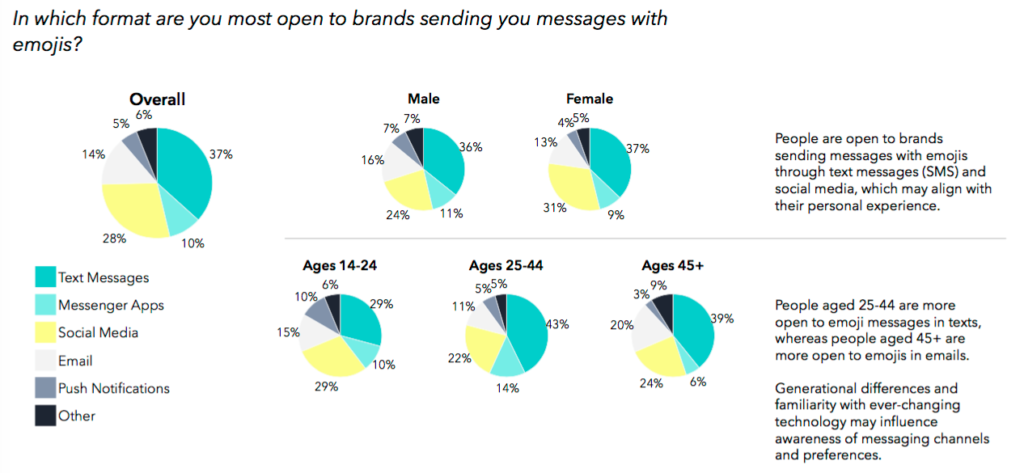
Using emojis in subject lines – is it smart or stupid?
By Sophia Skinbjerg | sophia.skinbjerg@ungapped.com
Over the summer some really interesting research came out about the effectiveness of emojis. Now for someone that ❤️ using emojis 👈, 👉 and center, I’m all for learning more about what other 👥 think of this new 🎨-form.
Where’s the data coming from?
The study was published a couple of months ago in July and comes from Appboy, a company that builds customer relationship technologies for marketers. Essentially, the researchers want to know how do consumers feel about seeing emojis in marketing messages?
The study comprised of two parts with part one looking at over 250 apps and six billion Android push, iOS push, and email messages sent from June 2015 to June 2016. Part two surveyed over 500 individuals to understand consumer emoji perception, habits, and preferences.
How do people feel towards emojis?
Overall, the study found a generally positive impression of emojis and their use by brands with 64% of respondents saying that they like/love emojis. Interestingly, there seems to be a slight difference between men and women’s impression of emojis. Seventy-two percent of women are favorable towards emoji but a slightly smaller amount of men agree with them (63%). While some other writers have claimed this as a large difference I don’t consider this a large gap. Well over half of these groups still rate emojis positively which is still a hugely significant number of people.
What’s less surprising is how people feel towards emojis when we split the data into age-based group. Not surprisingly, younger people are more likely to love emojis with around 70% of people aged 14 – 44 giving emojis a 👍 up. People over the age of 45 still favored emojis but to a less extent than their younger counterparts.
Who uses emojis?
To coincide with the data above, the study found that women and young people use emojis more than their male and older counterparts. Twenty-two percent of people used emojis in more than half of messages they send, another 65% using emojis in every other message that they send. Comparatively, people over the age of 45 never sent emojis almost a quarter of the time.
Related: 7 best practices for marketing to millennials
How do people feel towards brands that use emojis?
Good news brands: people generally have a positive feeling towards brands that use emojis. Most people, across genders and age-groups, thought that using emojis was fun, relatable and normal. However, while using emojis was seen as something positive, it was simultaneously not seen as professional. People aged 45 and older were the age group most likely to view the use of emojis as childish (15% of respondents).
In what channels are people open to receiving more emojis?
Given that the researchers new people were quite open to emojis and viewed them quite favorably, the study also sought to find out what channels people were most open to receiving emojis. The top three channels were text messages, messaging apps and social media. A little to my own surprise was email, ranked number 3.
However, even though people ranked text messages, messaging apps and social media above email, the study also found that using emoji in subject lines increased open-rates by 15% year over year. So while people might not be as open to seeing emojis in email, it sure makes them more likely to open it in the first place.
Related: Millennials and B2B marketing: they want something specific
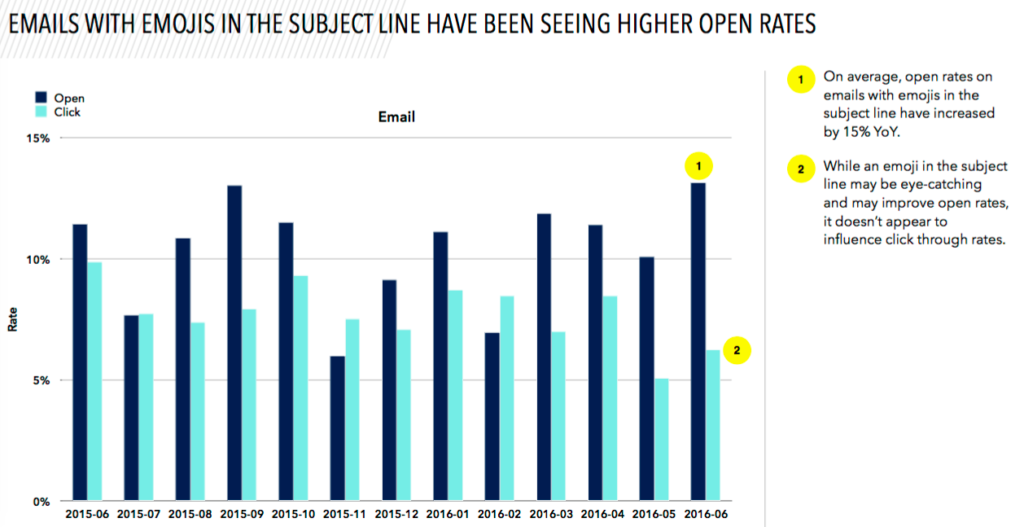
Should you start using emoji in subject lines?
Ultimately what this data is telling us is that seeing success with emojis depends on how well you know your personas. Knowing your personas on a deep and personal level will allow you to leverage data like this in order to provide them with marketing content that delights them.
Start testing emoji in your subject lines
Create an account for free and start testing those emoji 💁🏻
